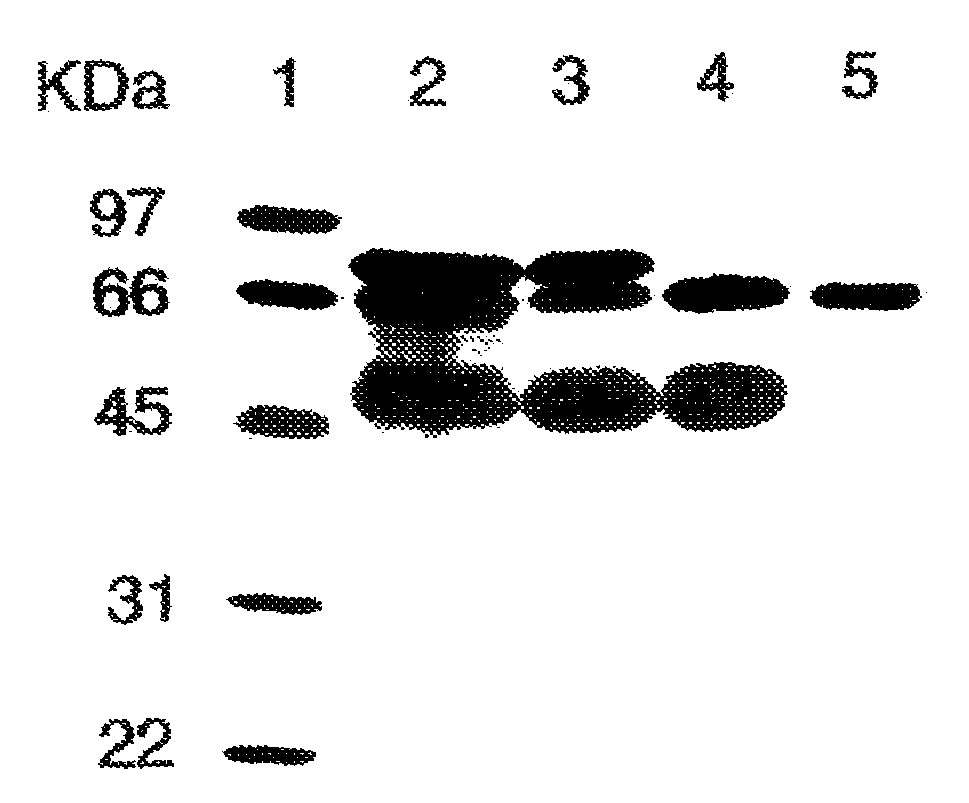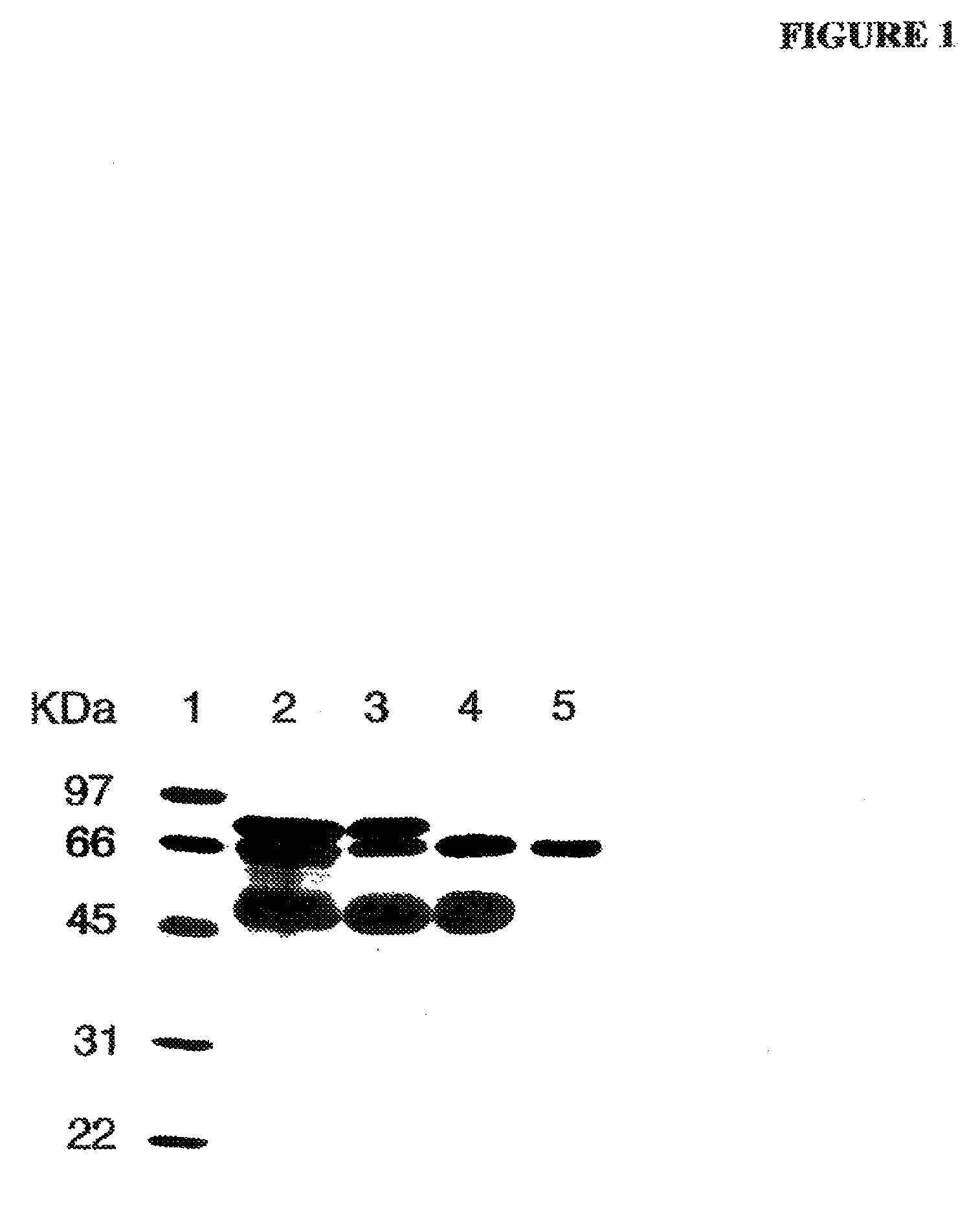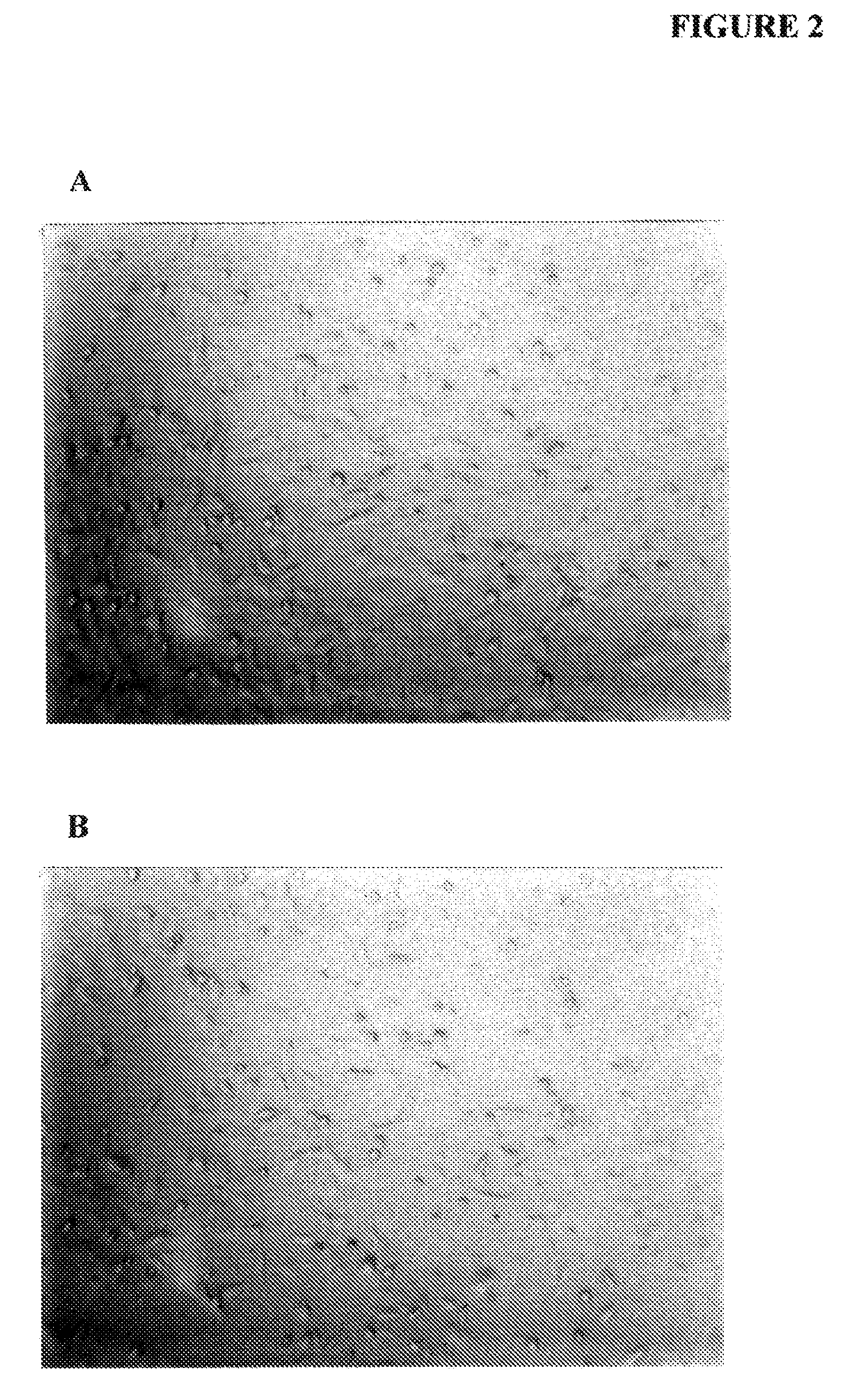Use of alkaline phosphatase to maintain healty tissue mass in mammals
a technology of alkaline phosphatase and phosphatase, which is applied in the direction of drug compositions, peptide/protein ingredients, metabolic disorders, etc., can solve the problems of reducing the function of skeletal muscle, increasing the risk of developing cancer and hypoglycemia after prolonged use, and many of the known therapies used to prevent the loss of muscle and adipose tissue are not ideal, etc., to achieve the effect of reducing the number of viable cells
- Summary
- Abstract
- Description
- Claims
- Application Information
AI Technical Summary
Benefits of technology
Problems solved by technology
Method used
Image
Examples
example 1
Purification and Spectrophotometric Assay of PALP
[0047]Human PALP (Type XXIV, 1020 units of total activity) in a partially purified form was obtained commercially from Sigma-Aldrich. A butanol extraction of placental tissue, followed by one or more chromatographic steps, was performed by Sigma-Aldrich to obtain the partially purified material.
[0048]As determined by sodium dodecyl sulfate-polyacrylamide gel electrophoresis (SDS-PAGE), the partially purified PALP obtained from Sigma-Aldrich (denoted “commercial PALP” herein) was not homogeneous and contained other proteins. FIG. 1 shows a digital image of a gel separation of a preparation comprising commercial PALP without further purification, and other preparations of PALP of increasing purity. Separation of proteins was performed by conventional SDS-PAGE, and proteins were stained with coomassie blue stain. Lane 1 contains various molecular mass standards for comparison. Lane 2 represents a preparation containing commercial PALP wi...
example 2
Production of Recombinant PALP
[0056]Recombinant PALP was produced following a known procedure described in Kozlenkov, A., Manes, T., Hoylaerts, M. F. and Millan, J. L. (2002), “Function assignment to conserved residues in mammalian alkaline phosphatases,” J. Biol. Chem. 277, 22992-22999, which is hereby incorporated by reference.
example 3
Use of the MTT Assay to Determine Cell Viability
[0057]In the Examples below, an MTT assay was used to determine the relative number of viable cells after treatments in vitro. The steps of this assay are described in Carmichael, J, De Graff, W. G., Gazdar, A. F., Minna, J. D. and Mitchell, J. B. (1987), Evaluation of tetrazolium-based semiautomated colorimetric assay: Assessment of chemosensitivity testing,” Cancer Res. 47, 936-942, which is hereby incorporated by reference. This colorimetric assay is based on the ability of living cells, but not dead cells, to reduce 3-(4,5-dimethyl thiazol-2-yl)-2,5-diphenyltetrazolium bromide. For this assay, cells were seeded in 96-well plates, and the MTT assay was performed as described in the above article both in untreated and treated cell cultures. The MTT assay also was performed at the time when the treatment was started to allow for assessment of the proliferation and survival rates in the control and treated cell cultures. Absorption was...
PUM
| Property | Measurement | Unit |
|---|---|---|
| Mass | aaaaa | aaaaa |
| Time | aaaaa | aaaaa |
| Time | aaaaa | aaaaa |
Abstract
Description
Claims
Application Information
 Login to View More
Login to View More - R&D
- Intellectual Property
- Life Sciences
- Materials
- Tech Scout
- Unparalleled Data Quality
- Higher Quality Content
- 60% Fewer Hallucinations
Browse by: Latest US Patents, China's latest patents, Technical Efficacy Thesaurus, Application Domain, Technology Topic, Popular Technical Reports.
© 2025 PatSnap. All rights reserved.Legal|Privacy policy|Modern Slavery Act Transparency Statement|Sitemap|About US| Contact US: help@patsnap.com



